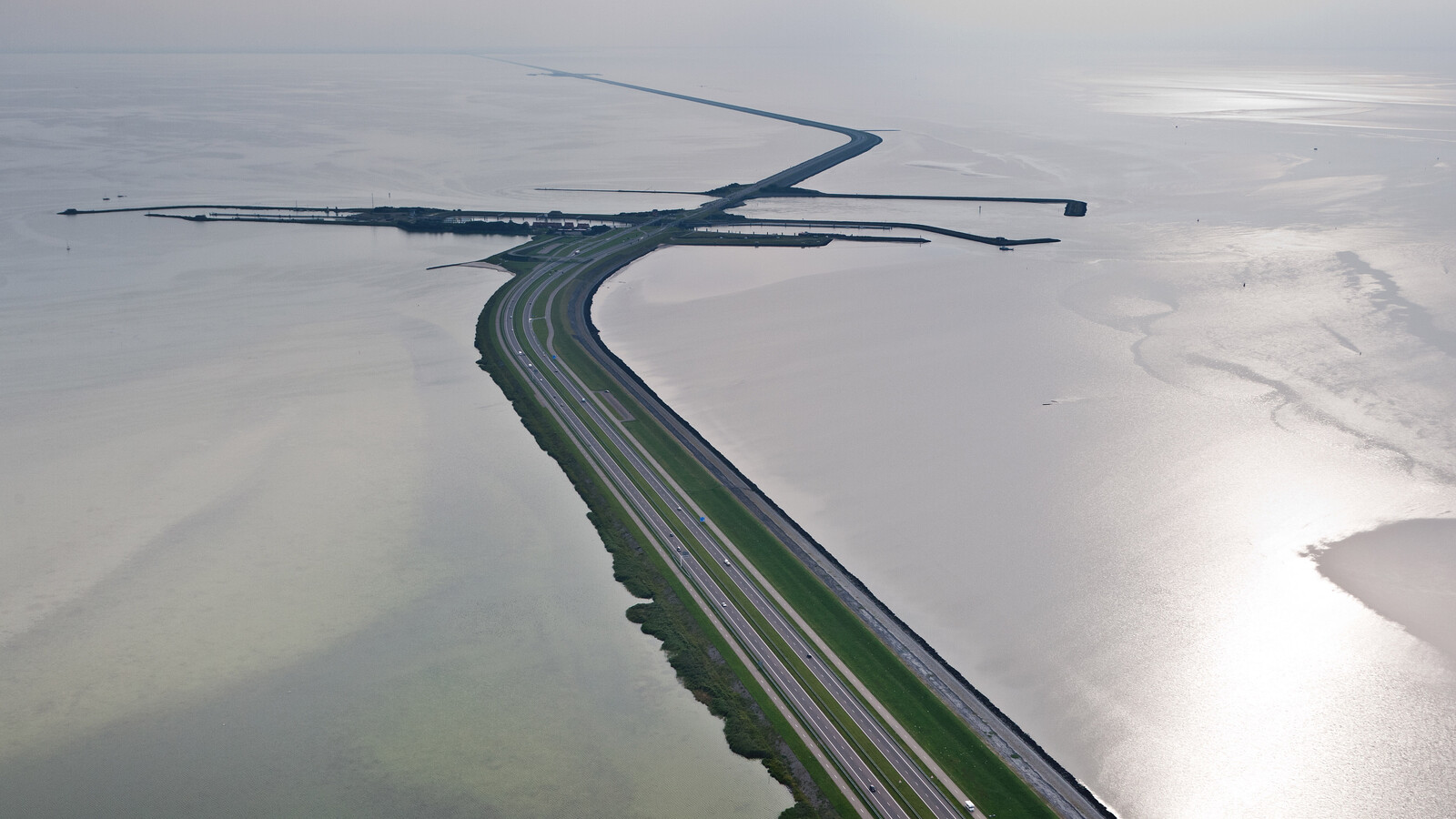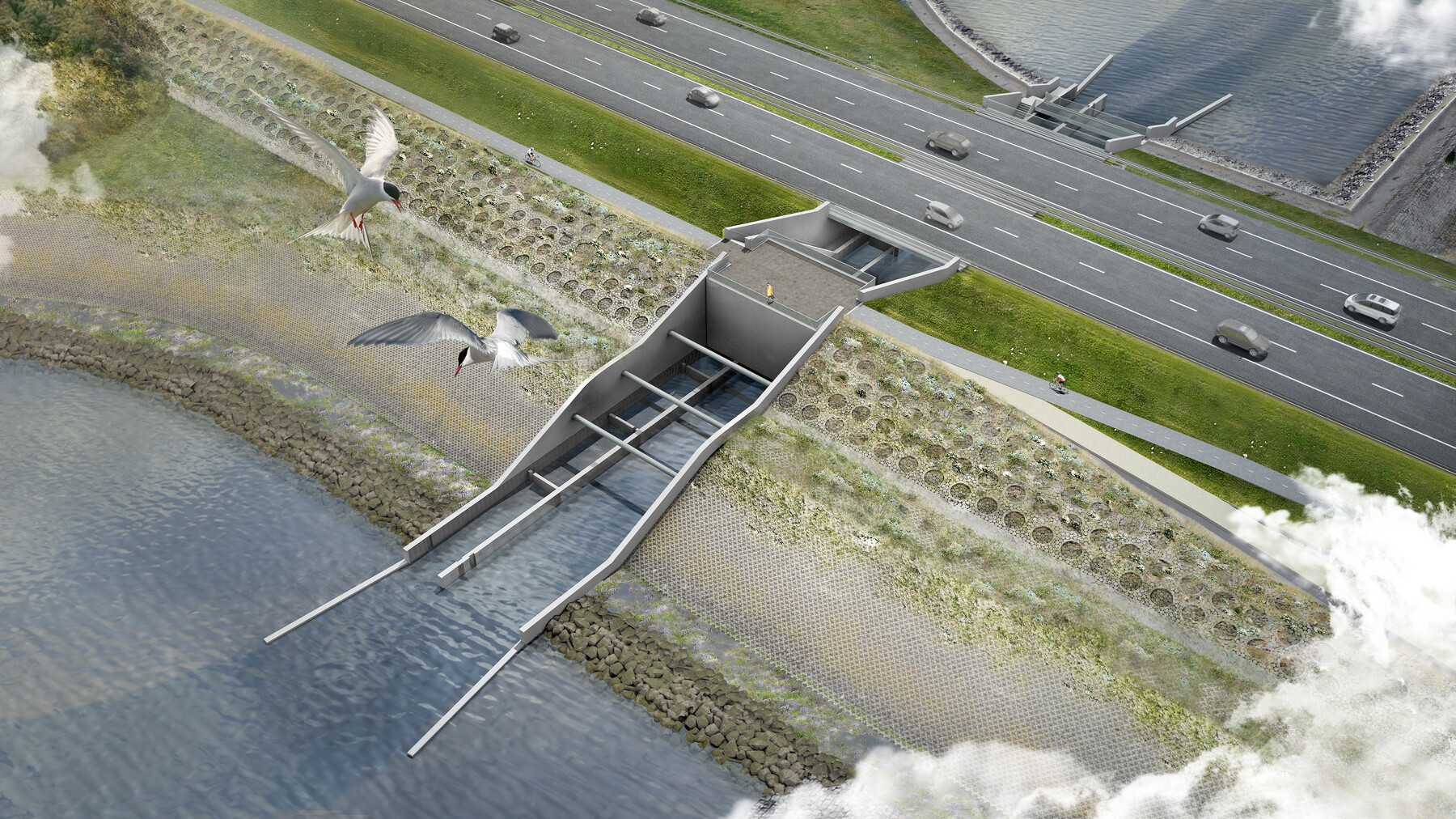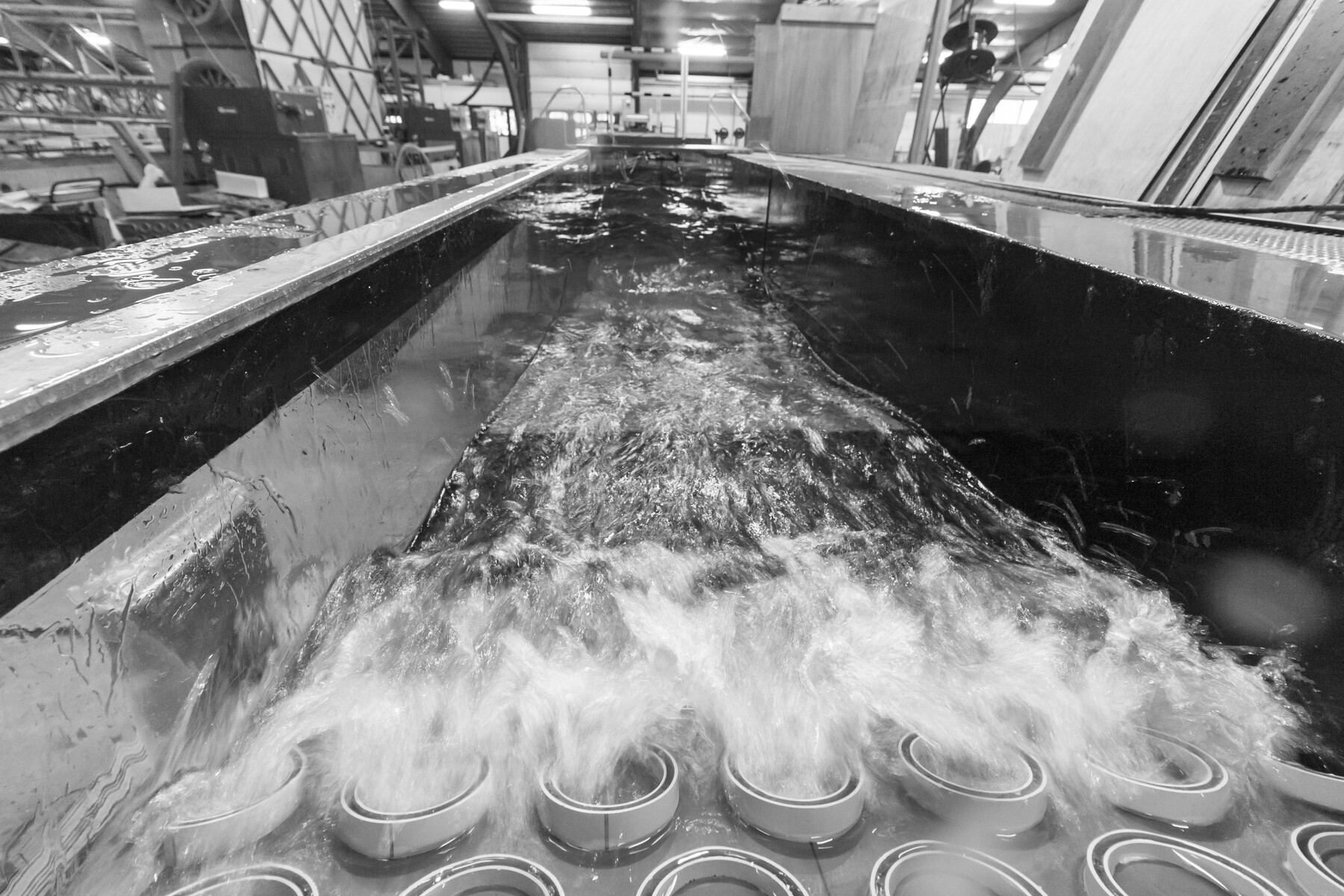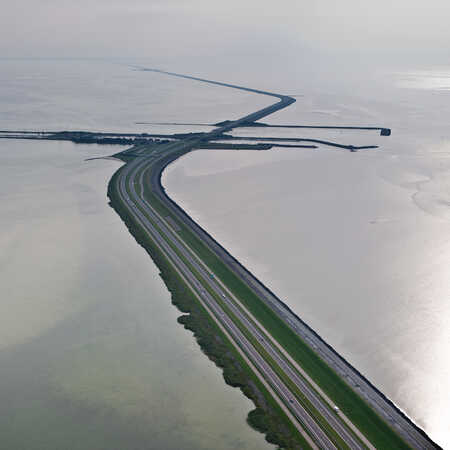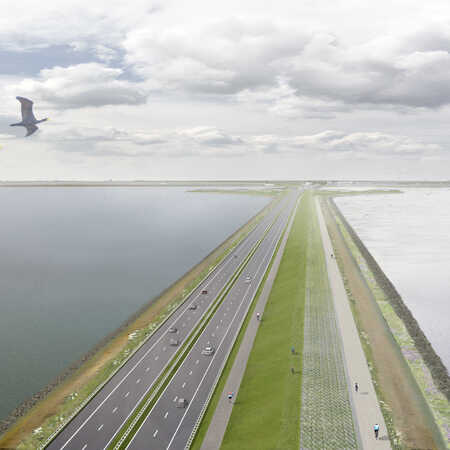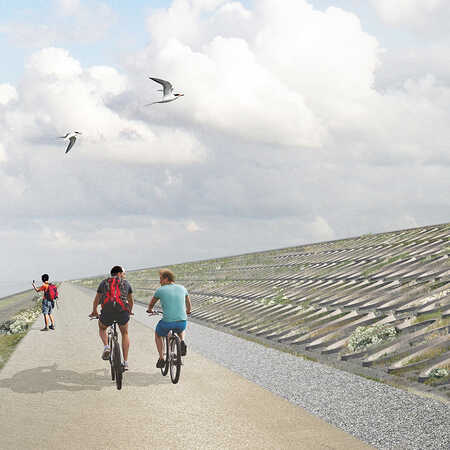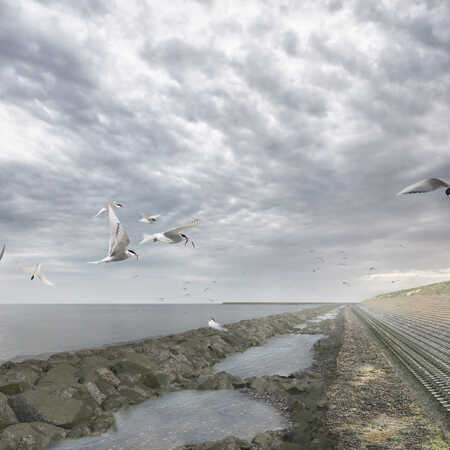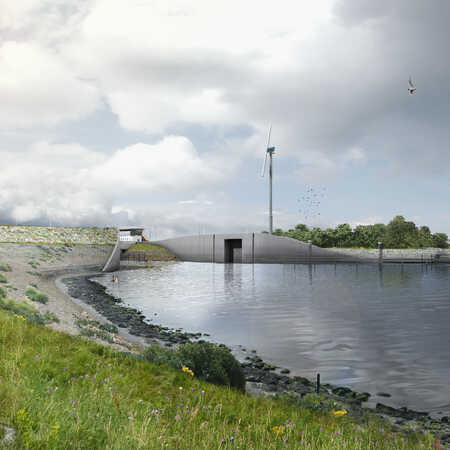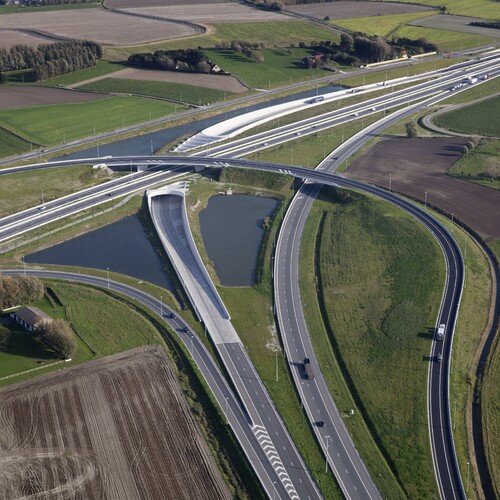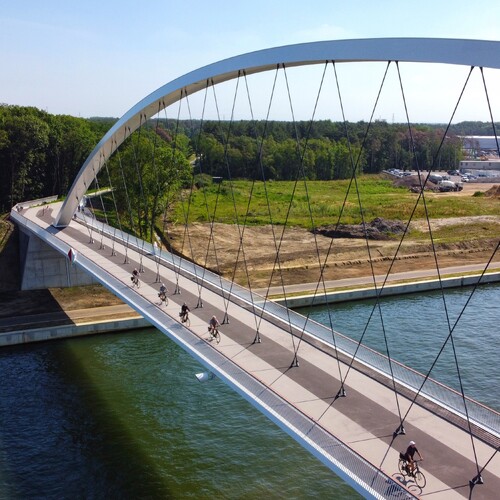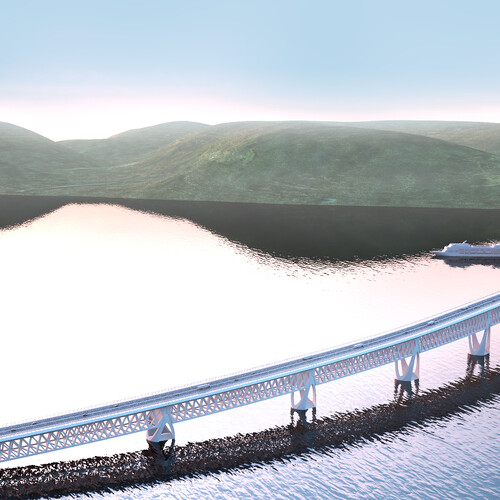It was imperative to increase the dyke’s height, but a second invention developed by ZJA, in collaboration with Royal HaskoningDHV, Vista and Corneel, made it possible to reduce this increase to just over a meter. For this system another patent was obtained.
Breaking the waves usually calls for huge concrete blocks or walls, but how to break waves without completely disturbing the dykes silhouette? By slowing the wave down as smart as possible. Every child knows the effect that slowly retreating water has on an incoming wave, smothering it and absorbing its energy. The best wave breaking effect proved to be a structure of concrete rings, as they hold and slow down a lot of water, but only require a modest height. Inside the rings gravel and small rocks provide extra roughness.
But what exactly is the right proportion between measures and height of the structure in relation to the water’s speed? The answer is: you adapt the proportions in the structure of rings to the wave spectrum of the sea at any specific location. The Corneel team succeeded in finding the formula that describes the optimum coarsening for the different sections of the Afsluitdijk. Experiments suggested the ratio between the width and height of the concrete rings. Here too, the insides of the rings, with rocks and gravel are a boost for the biodiversity on and around the dyke.
